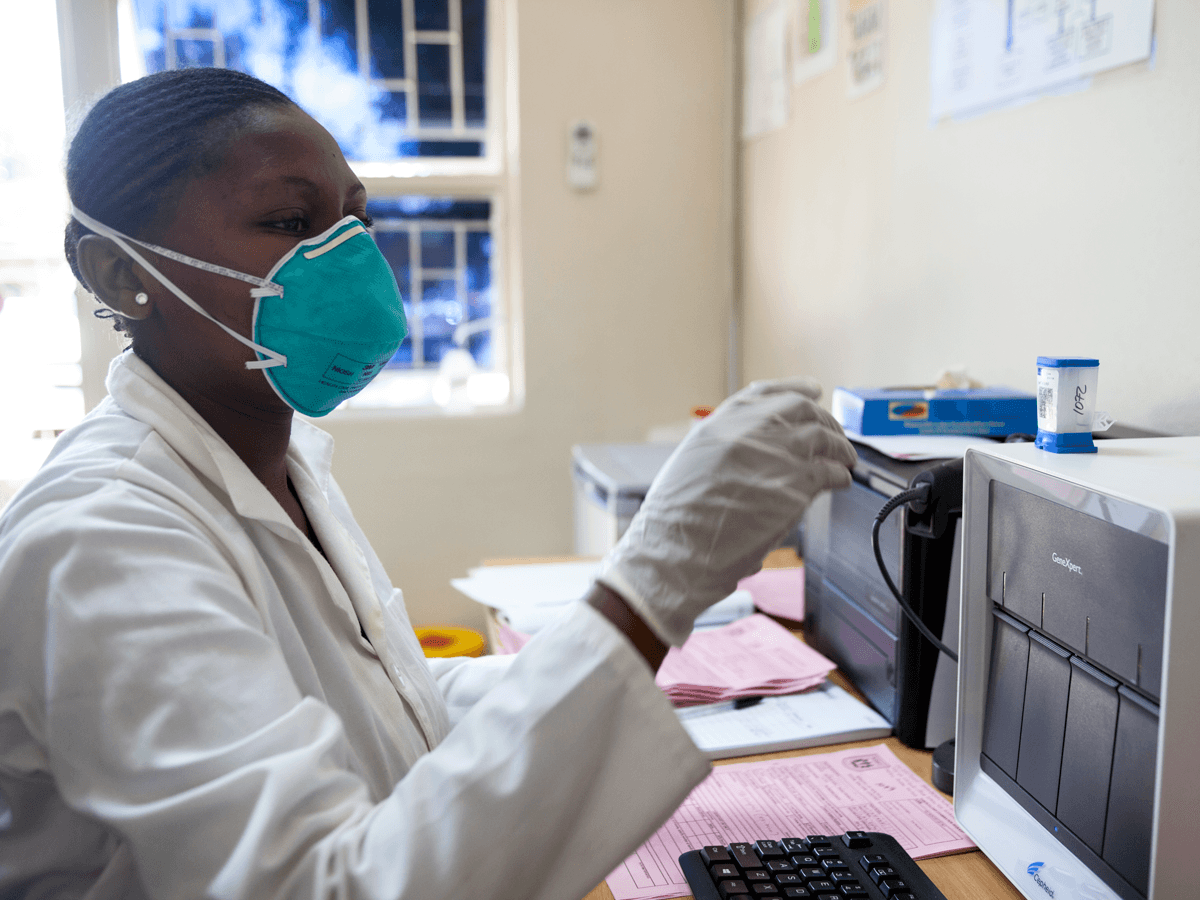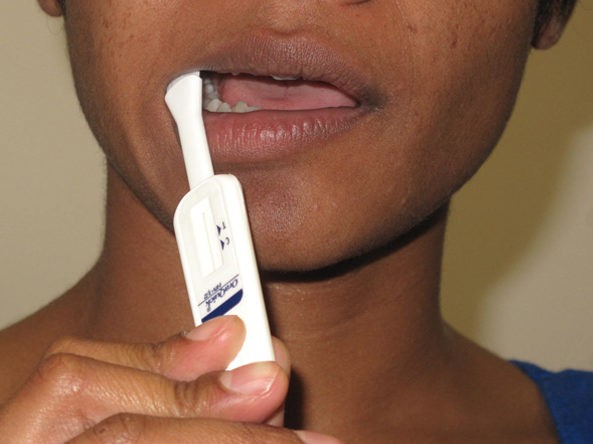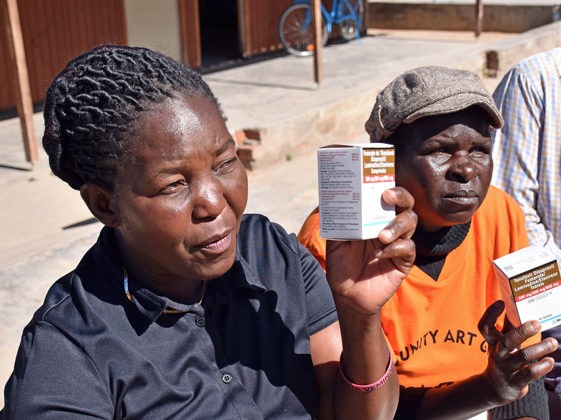Article and Study Summary
Rapid urine-based screening for tuberculosis in HIV-positive patients admitted to hospital in Africa (STAMP): a pragmatic, multicentre, parallel-group, double-blind, randomised controlled trial.
Published in:
Lancet. 2018; 392(10144):292-301.
doi: https://doi.org/10.1016/S0140-6736(18)31267-4
Authors:
Gupta-Wright A, Corbett EL, van Oosterhout JJ, et al.
Summary:
This article reports results from the STAMP trial, which was a pragmatic, multicenter, double-blind, randomized controlled trial that assessed the impact of urine-based tuberculosis (TB) screening on mortality among HIV-positive inpatients. All eligible, HIV-positive patients admitted to medical wards in two hospitals in South Africa and Malawi were randomized to either the intervention screening group or the standard-of-care group, irrespective of clinical signs or symptoms. In both groups, sputum was tested using Xpert MTB/RIF, and in the intervention group urine was tested using lipoarabinomannan (LAM) and Xpert MTB/RIF assays. Clinical care was provided by clinicians who were blinded to group allocation, and only informed that TB screening tests were positive, negative, or not done. After 56 days, no significant difference was found in all-cause mortality between the two groups, but mortality was significantly reduced in the intervention group among pre-specified subgroups including those with advanced HIV disease, severe anemia, or clinically suspected TB on admission. Urine-based TB screening also significantly increased the number of participants diagnosed with TB, with urine LAM assays providing the highest diagnostic yield. These results suggest that the expanded use of urine LAM assays for TB screening in inpatient settings could reduce mortality among high-risk groups, as well as reduce morbidity and onward transmission resulting from missed TB diagnoses.
Discussion Questions:
- How could the results presented in this article inform the use of the urine LAM assay in the programs that you work with?
- What programmatic challenges do you foresee if the use of the urine LAM assay is expanded? Do you have any experiences to share?
Please share your thoughts and experiences with us in the comments section below.
Full Synopsis:
PDF version available in English, French, and Portuguese.
Study Summary
The STAMP trial is a pragmatic, multicenter, double-blind, randomized controlled trial, that assessed whether urine-based tuberculosis (TB) screening using lipoarabinomannan Ag (TB-LAM) and Xpert MTB/RIF assays, in addition to screening sputum using Xpert, improved mortality compared to screening sputum alone, among HIV-positive patients admitted to two hospitals in South Africa and Malawi.
Study Setting
- Inpatient wards of Zomba Central Hospital in Malawi, which is a district and referral hospital, and Edendale Hospital in South Africa, which is a large urban referral hospital.
Methods
- All patients admitted to the medical wards were screened by study staff during weekdays, and were eligible to participate in the study if they were ≥18 years old and HIV positive.
- Patients were excluded from the study if they were currently on TB treatment, had been on TB treatment in the past 12 months, had taken isoniazid preventive therapy in the past 6 months, were unable or unwilling to provide informed consent, lived outside of the hospital catchment area or had been admitted to the hospital for >48 hours at the time of screening.
- Participants at each site were randomly assigned (1:1) to either the standard-of-care TB screening group or the intervention TB screening group, irrespective of symptoms or clinical presentation.
- A urine sample and spontaneously expectorated sputum sample were collected by study staff for all participants, and sent to the study laboratory.
- Laboratory technicians, who were not blinded to group allocation, tested sputum samples in both groups using the Xpert MTB/RIF assay, and urine from participants in the intervention group only with TB-LAM and Xpert.
- Clinical management of the participants was done by clinical staff per local and national guidelines and was independent of study staff.
- Clinicians managing the participants were blinded to group allocation and were only informed that TB screening tests were positive, negative, or not done.
- Study staff documented participants’ clinical events during their hospital admission, including any additional TB investigations and diagnosis, initiation of TB treatment, discharge and death.
- For participants discharged alive, follow-up occurred after 56 days through outpatient clinic attendance, by phone or by home visits, including interviews with next of kin if required.
- The primary outcome was all-cause mortality at 56 days after enrollment.
- Pre-specified high-risk populations for sub-group analysis were those with low baseline CD4 count (<100 cells/microliter), severe anemia (hemoglobin <8 grams/deciliter), or clinical suspicion for TB documented on admission.
- Secondary outcomes included duration of hospital stay, microbiologically confirmed TB, and clinically diagnosed TB, which was defined as the decision to initiate TB treatment in the absence of microbiological confirmation.
- All analyses were by intention-to-treat and risk difference calculations were adjusted for study site effect.
Study Population and Follow-up
- Between October 2015 and September 2017, 4788 HIV-positive adults were screened, of which 1928 (40%) were ineligible and 2600 (54%) were randomly assigned to the study groups.
- In the final intention-to-treat analysis, 1287 participants were included in each group, for a total of 2574, and 27 (1%) were lost to follow-up 56 days after discharge.
- Baseline characteristics were similar between participants in the study groups, with a mean age of 39.6 years (standard deviation 11.7 years) and 57% were women.
- Median CD4 count was 227 cells/microliter (interquartile range [IQR] 79–436), and 84% of participants knew their HIV diagnosis prior to admission, of whom 86% were on antiretroviral therapy (ART).
- On admission, 29% had a CD4 count <100 cells/microliter, 23% had severe anemia, 90% had one or more TB symptoms (i.e., cough, fever, weight loss, or night sweats), and 39% were clinically suspected of having TB.
- Urine was provided by 99% of participants, whereas only 57% produced sputum (39% in Malawi and 75% in South Africa).
Primary Outcome
- After 56 days, 21% of participants in the standard-of-care group and 18% in the intervention group had died (adjusted risk difference -2.8%, 95% confidence interval [CI] -5.8 to 0.3, p=0.074)
- Mortality in the intervention group was significantly lower than in the standard-of-care group for the three pre-specified high-risk subgroups: participants with CD4 counts <100 cells/microliter (adjusted risk difference -7.1%, 95% CI -13.7 to -0.4, p=0.036), participants with severe anemia (adjusted risk difference -9.0%, 95% CI -16.6 to -1.3, p=0.021), and participants with clinically suspected TB on admission (adjusted risk difference -5.7%, 95% CI -10.9 to -0.5, p=0.033).
- Overall, 36 patients would need to be screened with the study intervention (i.e., TB-LAM and urine Xpert) to prevent one death.
Secondary Outcomes
- Median duration of hospital stay was 6 days (IQR 2–11), and did not differ between the two groups.
- TB was diagnosed in 22% of participants in the intervention group and 15% in the standard-of-care group (adjusted risk difference 7.3%, 95% CI 4.4 to 10.2, p<0.0001).
- Compared to the standard-of-care group, the intervention group had more microbiologically confirmed TB diagnoses (7% vs 16%, adjusted risk difference 9.9%, 95% CI 7.5 to 12.4, p<0.0001) and fewer clinically diagnosed TB cases (9% vs 6%, adjusted risk difference -3.1%, 95% CI -4.9 to -1.4, p=0.0004).
- Overall, 14 patients would need to be screened with the study intervention to prevent one missed TB diagnosis.
Post-hoc Analyses
- TB diagnoses in the intervention group, compared to the standard-of-care group, were increased in participants with CD4 count ≥100 cells/microliter (adjusted absolute risk increase of 7.0%, 95% CI 4.1 to 10.0) and in those not clinically suspected of having TB on admission (adjusted absolute risk increase of 8.0%, 95% CI 5.0 to 11.1).
- The largest increase in TB diagnoses in the intervention group was seen in the severe anemia subgroup, with an adjusted risk increase of 18.6% (95% CI 11.5 to 25.6).
- In the intervention group, TB-LAM provided the highest diagnostic yield (75% of 210 patients with microbiologically confirmed TB), compared with 35% with urine Xpert and 40% with sputum Xpert, with an incremental diagnostic yield of 41% from TB-LAM, 6% from urine Xpert, and 14% from sputum Xpert.
Critical Analysis
This pragmatic, multicenter, double-blind, randomized controlled trial found that urine-based TB screening of HIV-positive inpatients did not significantly reduce overall mortality at 56 days, but did show a survival benefit in those with low CD4 count, severe anemia, or clinically suspected TB. This study also demonstrated that urine-based TB screening increased TB diagnoses compared to sputum screening alone, and that urine TB-LAM had a higher diagnostic yield than urine Xpert.
The following points should be considered when interpreting the study findings:
- The World Health Organization (WHO) recommends sputum Xpert as a diagnostic test in those suspected of having TB1, however in this study it was used as a screening test in all HIV-positive inpatients, regardless of clinical suspicion for TB. Therefore, it is possible that a higher proportion of TB diagnoses would be missed in real-world settings than were missed in the standard-of-care group of this study.
- The follow-up period of 56 days (8 weeks), may have been too short to capture significant differences in mortality, especially among those with less advanced disease.
- This study was powered to detect a mortality difference of ≥5% and therefore may not have captured small reductions in mortality, which have previously been documented with the use of urine LAM for HIV-positive inpatients with clinically-suspected TB.2
- Patients who were unable to give consent were excluded, including those who were critically ill, which is a group that is more likely to benefit from early TB diagnosis.
- The two study hospitals were both referral centers, with relatively rapid specimen collection and short turnaround time for laboratory test results, which limits the generalizability of these findings to settings with fewer resources.
- Differences in local TB prevalence between the two sites likely impacted clinical decision making, including differences in clinical suspicion for TB on admission (51% in South Africa versus 27% in Malawi), obtaining chest radiographs (74% of participants in South Africa versus 23% in Malawi), and the overall positive predictive value of TB screening tests.
Implications
This pragmatic, multicenter, double-blind, randomized controlled trial in South Africa and Malawi found that urine-based screening for TB among all HIV-positive inpatients reduced mortality in three high-risk subgroups. It also demonstrated a significant increase in the number of TB diagnoses made, with the majority of the diagnostic benefit attributable to the use of urine TB-LAM. Urine LAM assays are inexpensive, and urine samples are often easier to obtain than sputum samples in inpatient settings. Currently, the WHO supports use of urine LAM assays as a diagnostic test for HIV-positive individuals with CD4 count <100 cells/microliter and signs or symptoms of TB.3 This study provides evidence that expanding the use of urine LAM assays to test all HIV-positive inpatients with severe anemia or with CD4 count <100 cells/microliter, regardless of TB symptoms, and in cases where TB is clinically suspected, regardless of CD4 count, could reduce mortality in high prevalence settings. Further expanding the use of urine LAM to test all HIV-positive inpatients could also have a significant public health impact by reducing TB-related morbidity and onward transmission from undiagnosed TB.
This article synopsis was written by Cassia Wells. Share your thoughts on this article or suggest an article for Journal Club by emailing her at caw2208@columbia.edu.
References
- World Health Organization. Automated real-time nucleic acid amplification technology for rapid and simultaneous detection of tuberculosis and rifampicin resistance: Xpert MTB/RIF assay for the diagnosis of pulmonary and extrapulmonary TB in adults and children: policy update. Geneva: World Health Organization, 2013.
- Peter JG, Zijenah LS, Chanda D, et al. Effect on mortality of point-of-care, urine-based lipoarabinomannan testing to guide tuberculosis treatment initiation in HIV-positive hospital inpatients: a pragmatic, parallel-group, multicountry, open-label, randomized controlled trial. 2016; 387: 1187–97.
- World Health Organization. The use of lateral flow urine lipoarabinomannan assay (LF-LAM) for the diagnosis and screening of active tuberculosis in people living with HIV: policy. Geneva: World Health Organization, 2015.
Articles of Note
- Four Months of Rifampin or Nine Months of Isoniazid for Latent Tuberculosis in Adults
- Targeted combination prevention to support female sex workers in Zimbabwe accessing and adhering to antiretrovirals for treatment and prevention of HIV (SAPPH-IRe): a cluster-randomised trial
- Sensitivity and specificity of WHO’s recommended four-symptom screening rule for tuberculosis in people living with HIV: a systematic review and meta-analysis









